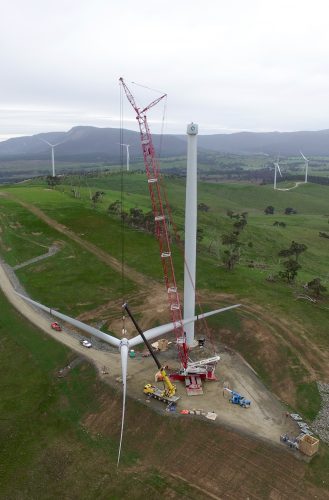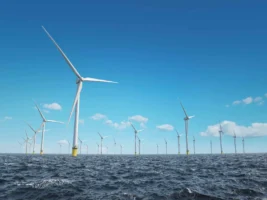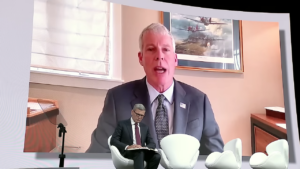The recently completed 240MW Ararat Wind Farm in south-western Victoria is now operating at full capacity, feeding enough renewable energy into the grid to power 120,000 homes, 37,000 of them in Canberra.
The wind farm, which is operated and managed by Canberra-based company Windlab, was fully commissioned on Wednesday this week, after several years in the works. It first began sending power to the grid in Victoria in August 2016. This graph below, from the Energy and Climate College, shows how it has expanded production.
 The project gained significance as the first wind farm to be contracted after the reinstatement of a bipartisan federal renewable energy target – that is, after the Coalition and Labor agreed to cut the RET to 33,000GWh from 41,000GWh).
The project gained significance as the first wind farm to be contracted after the reinstatement of a bipartisan federal renewable energy target – that is, after the Coalition and Labor agreed to cut the RET to 33,000GWh from 41,000GWh).
In Ararat’s case, the go-ahead was buoyed by the signing of a power purchase agreement with the ACT government, which guaranteed the purchase of approximately 40 per cent of its annual output – a contract it is now delivering on.
“The ACT’s agreement with the Ararat Wind Farm provided certainty for investors and enabled construction to commence in late 2015,” ACT climate minister Shane Rattenbury said on Wednesday.
“This is good news for consumers as well as climate change mitigation, as the ACT government has locked-in a set price for the renewable electricity produced by 10 wind and solar projects, including Ararat, for the next 20 years.”
Rattenbury – whose predecessor, Simon Corbell, is widely regarded as the mastermind of the nation-leading renewables policy – said that the Capital was showing the federal government how to deliver on clean energy.
“If the generators make more money than the set price for the electricity they sell into the national electricity market, they pay the difference back to the ACT,” Rattenbury said.
Ararat Mayor, Paul Hooper, described the wind farm as a “really significant” project for the city, bringing $450 million of investment, 350 jobs at its construction peak, and more than $40 million into the local economy during construction, which lasted about 18 months.
“It was completed on time and to a very high standard,” Hooper said, adding that project developer RES Australia had been “…very, very good corporate citizens” throughout the development.










